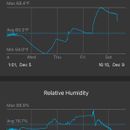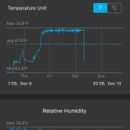Heat AND dehumidify after drywall mudding in a new tight home?
I live in the Seattle area where it’s currently in the high 30s (F) at night. We just had drywall hung and mudded, and they’re heating to 73F to “dry” it all, but I’m a bit concerned about water not being able actually leaving the space because we’ve made our home so tight (no blower door testing? But it’s definitely quite well sealed). Two days in, and we’re still seeing substantial condensation on window panes with water pooling on the sills and millions. Is normal procedure to run an actual dehumidifier alongside the heat in a super tight home, or am I just over thinking this? What air RH and temp should I be targeting for proper mud/drywall curing without cracking or mold-ing?
Attached are some air temp and RH readings from a couple of rooms — note the major dips in RH are when all windows and doors are opened for a few minutes to try to let some moisture out.
GBA Detail Library
A collection of one thousand construction details organized by climate and house part












Replies
Oh, and the HRV is not yet operational / don’t really want it running while drywall work is happening in case they forget to turn it off when they come back to sand.
A regular house needs dehumidification after drywall, never mind something well sealed. Around me stand alone basement dehumidifiers are standard so it easy to find/borrow three or so and leave them running. Bonus, the dehumidifier also helps heats the place. I normally set them up in the bathtub or shower so it can drain.
You can buy a larger budget unit from the box store (you'll most likely need dehumidification for the first year of occupancy anyways) or you can look at renting a commercial unit. You can also leave the windows open. You do need to deal with construction humidity, hoping that it goes away is asking for mold down the road. The HRV will not remove enough humidity to dry the place unless it is WAY oversized.
Alright, well setting my dehumidifiers, it is, then!
Any suggestion on a set RH? I don’t want to make the place so dry that it cracks the joint compound while it’s curing.
50%.
Most likely the dehumidifiers will run continuously anyway, but that's a good stopping point.
Lovely. And smart. Thanks!
Dehumidifiers are also very efficient space heaters. The latent heat of all of the water removed goes back into the room. They typically have a COP that would make a heat pump jealous.
A dehumidifier on each floor would probably heat the house.
That’s a fascinating point. I’ll do that.
finePNW,
We usually heat and just crack a couple of windows. The energy penalty isn't huge for the few days that it takes.
Ah that’s smart, too, given we shouldn’t see ice/freezing conditions in the near future. Harder to do securely over the weekend with no one on site, but I’m sure I could figure something out.